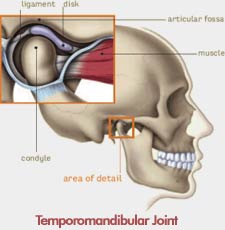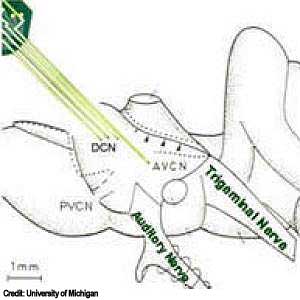By Barry Keate
Barry Keate, has lived with tinnitus over 40 years and has published 150+ research articles on numerous aspects of tinnitus. He is an expert on the condition and a well-known advocate for those with tinnitus.
A new study from the University of Michigan, Kresge Hearing Research Institute, has found when the cochlea is damaged by loud noise or other causes, sensory nerves in the face and neck become overactive and contribute to the noise we know as tinnitus.
The direct implication of this research is that present-day therapies, such as acupuncture, when applied to the nerves in the face and neck, should have a beneficial effect on tinnitus loudness.
Susan Shore, PhD and her team at the Kresge Hearing Institute conducted the study on guinea pigs. It was published in the European Journal of Neuroscience. They conducted the research on 18 healthy female guinea pigs. Six were control animals and 12 were hearing impaired caused by exposure to loud broadband noise.
The researchers studied responses in the dorsal cochlear nucleus (DCN). The DCN is a neuron lobe that is the first relay station in the auditory system for signals from the cochlea on their way to the auditory cortex. It also contains multisensory neurons that receive signals from the trigeminal nerve system that contains sensory information from the face and neck. This sensory information includes touch, vibration, skin temperature and pain.
The dorsal cochlear nucleus is bi-modal in this sense: it integrates nerve signals from the auditory nerve as well as from the sensory nerves in the face and neck and sends them to the brain.
In the study, Shore and her team measured the pattern of activity of neurons in the brains of normal and deafened guinea pigs. They used a 16-electrode array to measure signals from the trigeminal (sensory) nerve and multisensory neurons in the dorsal cochlear nucleus. When they compared results in the two groups, they found clear differences in trigeminal nerve activity. They knew from earlier research that some neurons in the cochlear nucleus became hyperactive after hearing damage, and this hyperactivity has been linked to tinnitus in animals.This study showed that only those neurons that received sensory input from the trigeminal nerve become hyperactive.
“In this study, we showed that when there is hearing loss, other parts of the brain that normally convey signals to the cochlear nucleus have an enhanced effect” says Shore. “When you take one source of excitation away, another source comes in to make up for it.” The resulting nerve firings in the cochlear nucleus create the din of tinnitus.
This is analogous to those who have lost their vision and auditory signals become more enhanced resulting in acute hearing. Here the auditory component is damaged and sensory information is enhanced resulting in hyperactivity and increased tinnitus.
Acupuncture, the ancient Chinese system of balancing the life forces in the body, may be very helpful for calming the neuronal overload in the dorsal cochlear nucleus.
 Many individuals with temporo-mandibular joint dysfunction (TMJ), a condition that causes frequent pain in the jaw, experience tinnitus. Shore’s research could lead to a better understanding of this link. In people with TMJ, the sensory system is disrupted and inflamed. Shore says that it’s possible that in this situation, as in hearing loss, sensory neurons stir excessive neuronal activity in the cochlear nucleus.
Many individuals with temporo-mandibular joint dysfunction (TMJ), a condition that causes frequent pain in the jaw, experience tinnitus. Shore’s research could lead to a better understanding of this link. In people with TMJ, the sensory system is disrupted and inflamed. Shore says that it’s possible that in this situation, as in hearing loss, sensory neurons stir excessive neuronal activity in the cochlear nucleus.
Author’s note:
It is my understanding that the condition of TMJ causes stress in the ligament that connects the temporo-mandibular joint with the inner ear. Treatment for this condition currently emphasizes relaxation techniques designed to reduce the inflammation, exactly what Dr. Shore is describing. You can read a full discussion of TMJ in our tinnitus library.
References:
- SE Shore, S Koehler, M Oldakowski, LF Hughes, S Syed. Dorsal cochlear nucleus responses to somatosensory stimulation are enhanced after noise-induced hearing loss. European Journal of Neuroscience, Vol. 27, pp. 155-168, 2008.

